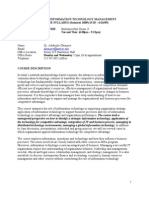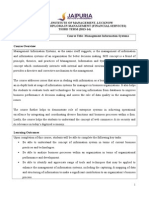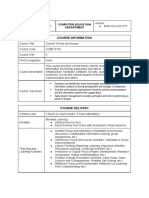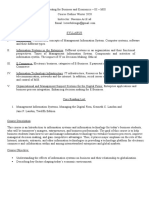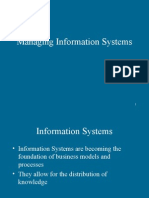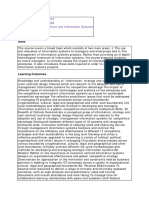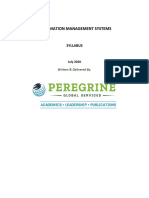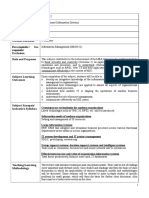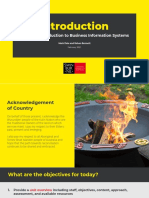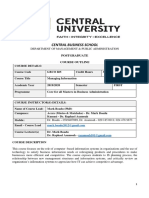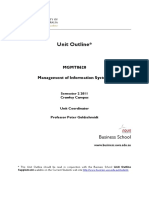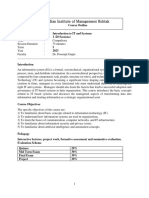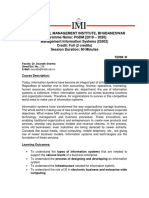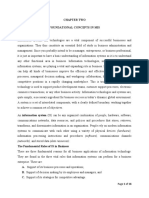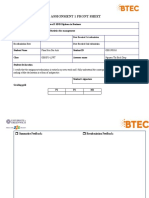0% found this document useful (0 votes)
35 views71 pagesLecture 1
The document outlines the course ISIT224 Management Information Systems, led by Dr. Jun Yan, focusing on the role of information systems in contemporary business environments. It covers major topics such as system components, organizational impacts, and future trends, along with assessments including lab discussions, group projects, and a final exam. The course emphasizes the importance of information systems in decision-making and organizational transformation.
Uploaded by
potatoaddumplingCopyright
© © All Rights Reserved
We take content rights seriously. If you suspect this is your content, claim it here.
Available Formats
Download as PDF, TXT or read online on Scribd
0% found this document useful (0 votes)
35 views71 pagesLecture 1
The document outlines the course ISIT224 Management Information Systems, led by Dr. Jun Yan, focusing on the role of information systems in contemporary business environments. It covers major topics such as system components, organizational impacts, and future trends, along with assessments including lab discussions, group projects, and a final exam. The course emphasizes the importance of information systems in decision-making and organizational transformation.
Uploaded by
potatoaddumplingCopyright
© © All Rights Reserved
We take content rights seriously. If you suspect this is your content, claim it here.
Available Formats
Download as PDF, TXT or read online on Scribd
/ 71








